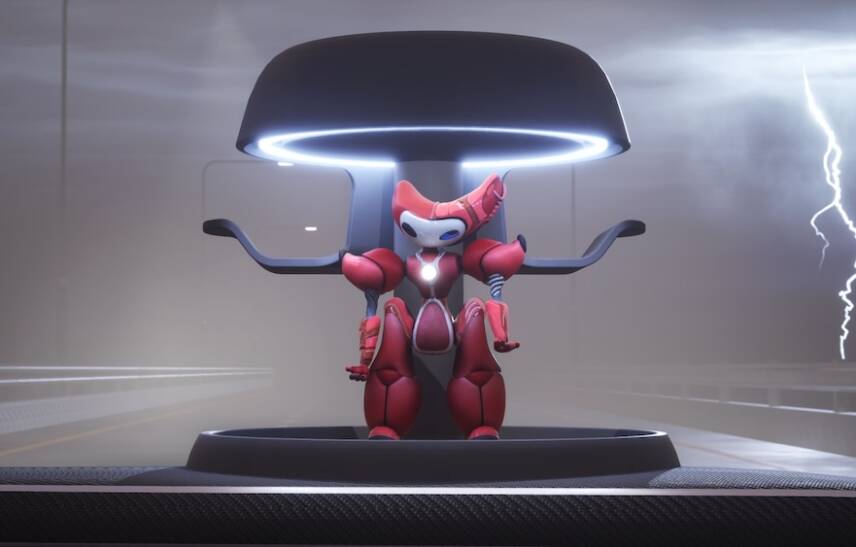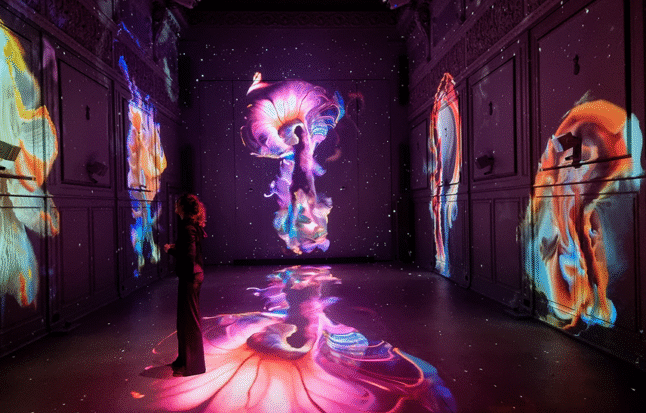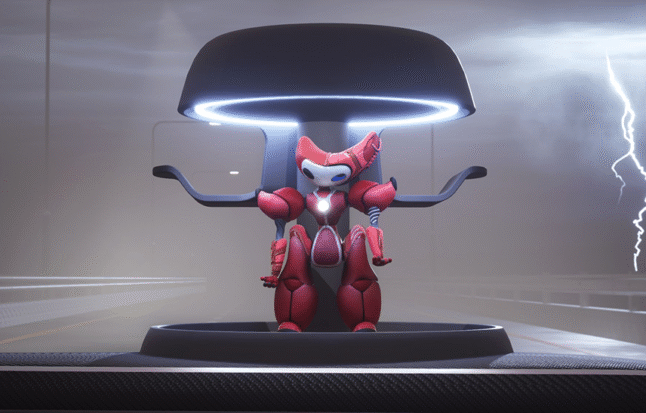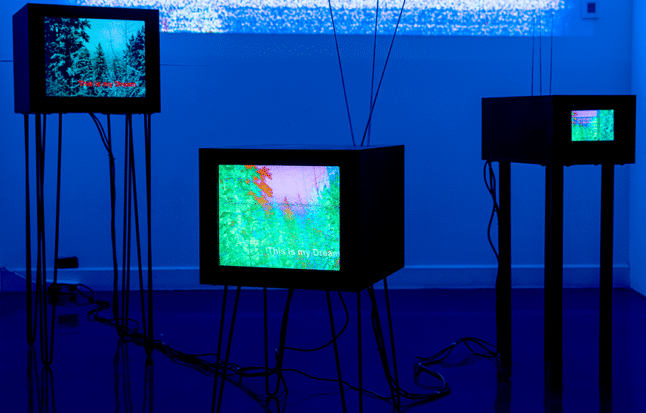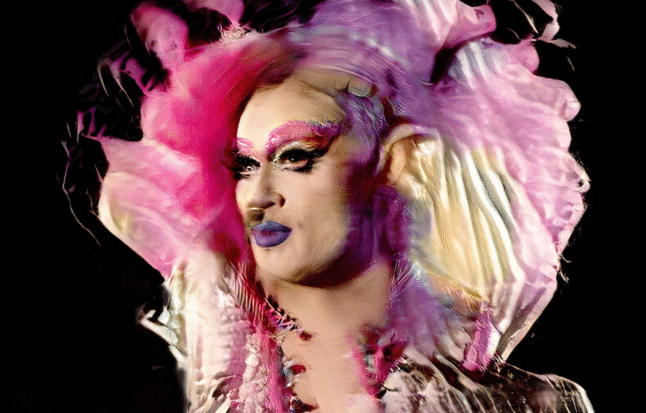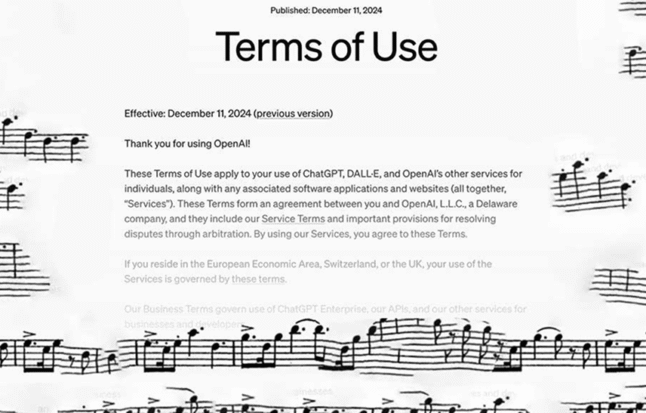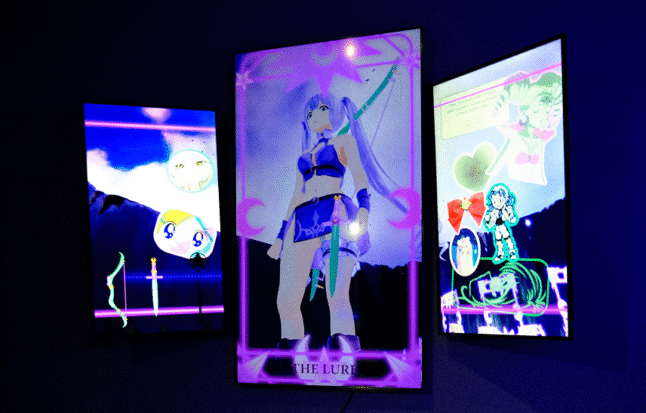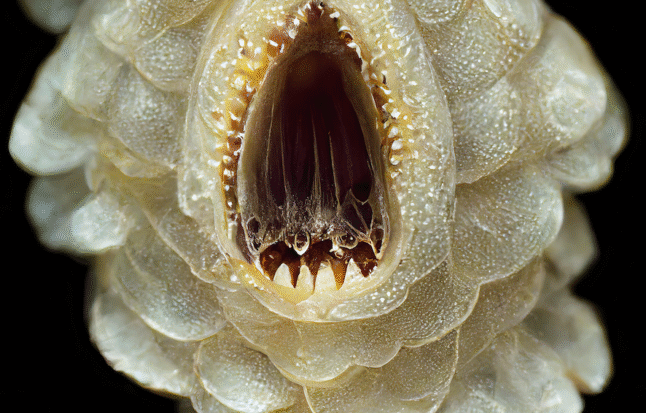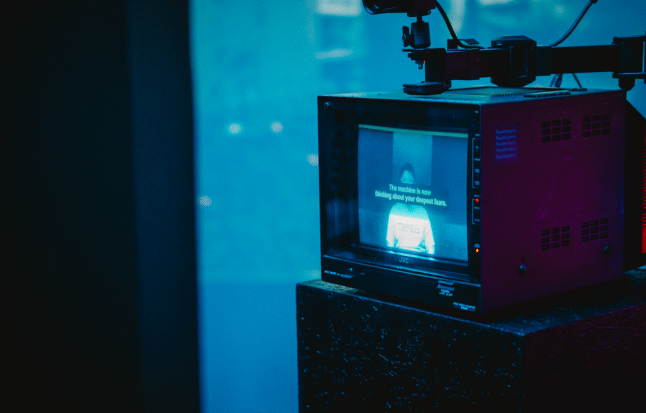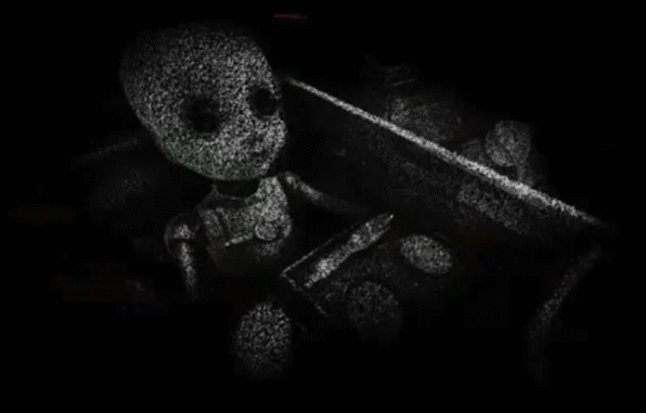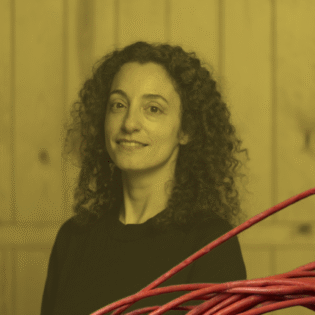Main exhibition May AI Help You? at 14th Patchlab Festival, curated by Irini Mirena Papadimitriou and Elwira Wojtunik, presents artworks that explore how artificial intelligence and digital technologies are reshaping our understanding of the world, their impact on storytelling, and the complex entanglements of influence, authorship, and representation.
AI has been playing a growing role in deciding what content we are exposed to and consume, what stories are worthy of our time, but also what news we should be paying attention to. AI and digital technologies, like an invisible hand, have been steering our view of the world, shaping the stories we tell, the media we engage with, and the very fabric of language and identity. They have been filtering our reality showing us predictions of what we want to experience and see, and in a way, where content eventually becomes homogeneous and monocultural, creating as thus echo chambers, but also facilitating misinformation, and limiting critical thinking.
If AI systems are controlling the narrative, pushing for profitable ideas and stories, rather than meaningful and authentic ones, focussing on individual preferences and experiences, rather than collective or diverse ones, what are we missing out on? If complex ideas are less valued or harder to access, and if instead of what one might think of as endless possibilities and neutral material, we have limited or filtered content, what does that mean, and what are the implications for the future of culture, storytelling, or knowledge?
AI technologies reflect ourselves, our values, ambitions, and also flaws, but at the same time they amplify them. How do we navigate views of the world, generated, analysed, categorised, and interpreted by machines, while machine-made simulations seed themselves back into future training data, perpetuating a self-generative feedback loop? What does it mean to “see” in an AI-driven world, where digital representations shape our sense of identity, thinking, and belonging, but also in a world where computation absorbs us, produces and reproduces us?
The narratives produced by AI are very much dependent and influenced by the systems that build it, the power structures that sustain it, and the intentions behind it. Intentions of the people and institutions who design, deploy, and control it. AI doesn’t just reflect our reality—it reinforces existing biases, marginalises certain voices, and amplifies dominant ideologies, often under the guise of neutrality or objectivity. What does “free will” mean when machines influence us so subtly?
In Terms & Conditions Opera: a Legalese Libretto by Jake Elwes, AI is feeding on itself, in an absurdist opera that satirises the impenetrable legal jargon governing generative tools. Lawrence Lek’s Guanyin (Confessions of a Former Carebot) presents a cyborg therapist created to save other AIs from the brink of self-destruction. In his British Algae series, Craig Ames channels 19th-century scientific methods to probe the aesthetics of machine-generated taxonomies. Y7, in The Undead Internet Theory) investigate how automation has already begun to reshape the way culture is produced, circulated, and consumed, and speculate on the future of the internet, which is increasingly being shaped by AI. Nye Thompson in CU Soon – with a gesture of rebellion against technological opacity, and connection in a time of global and networked isolation – reframes satellites as invisible collaborators rather than distant surveillants. Lure by Sian Fan reflects on the complexity of agency and influence, and how virtual depictions of femininity can simultaneously empower and limit. While, Memo Akten and Katie Peyton Hofstadter, in Superradiance, a video and sound installation exploring embodiment, technology, and planetary consciousness, invite viewers to experience connections with the living planet through their bodies.
Interactive installation The Confessional, by mots duo, is a provocation raising questions about how artificial intelligence perceives us and to what extent we are willing to accept its judgment. Onirica by fuse, based on an archive of 28,748 dreams, guides the viewer through a hypnotic and deeply intimate projection in which AI acts as both translator and curator of the subconscious. Last, but not least, in VR experience Conversations, created entirely in dialogue with artificial intelligence systems, Jacek Nagłowski challenges the anthropocentric perspective and invites reflection on the ethical implications of coexisting and co-creating with digital representations of non-human consciousness.
The works presented interrogate the mechanisms of control, labor, and longing embedded within AI and technological systems, asking what it means to create with and through machines, and how we reckon with tools that reflect us back in distorted, uncanny forms. Can we reimagine our relationships with these systems—legally, spiritually, emotionally?
Working across machine learning, virtual worlds, video games, speculative fiction, historical reappropriation, the artists here offer us a multilayered commentary on our increasingly hybrid realities. Revealing not only how machines and AI see us, but how we might begin to see ourselves differently through them. But they also show us that if AI is a tool, it is one we must learn to reclaim—repurposed not just to mimic human creativity, but to help us understand the shifting coordinates of our agency, desire, and connection in a networked age. Asking what it means to be human in a time when machines listen, learn, and look back.
May AI Help You? exhibition at 14th Patchlab Festival, is organised in partnership with FutureEverything and supported by the British Council under the UK/Poland Season 2025 – the groundbreaking initiative that celebrates the depth and diversity of cultural exchange between our two nations.
_______________________________
